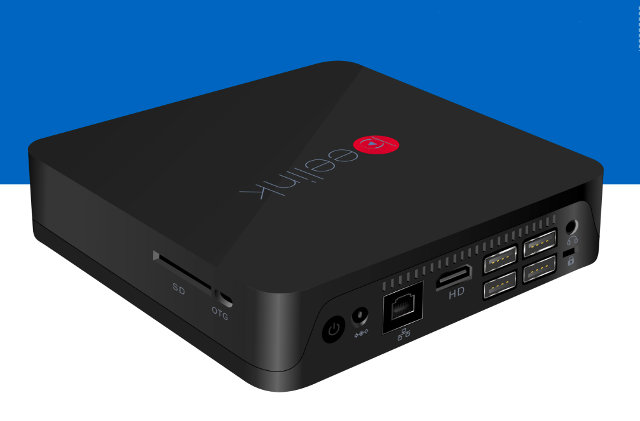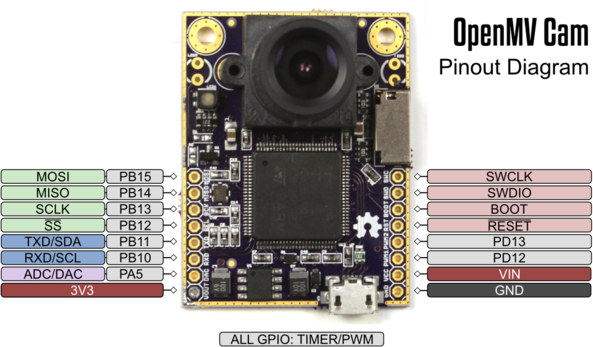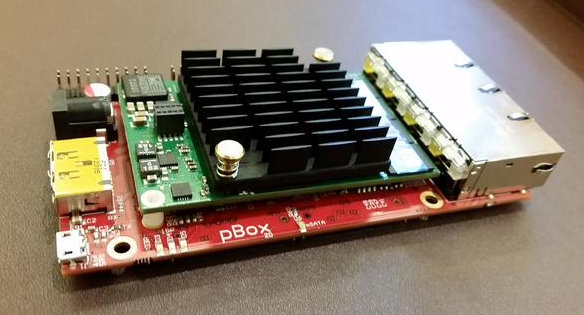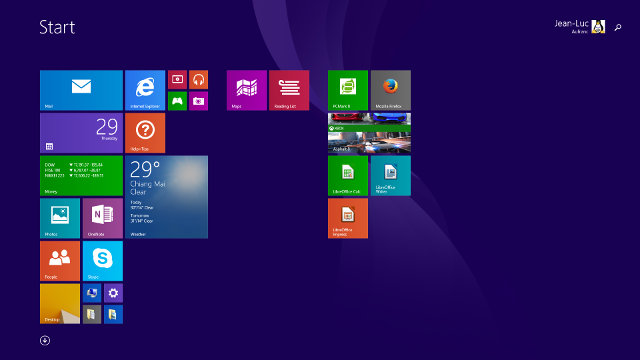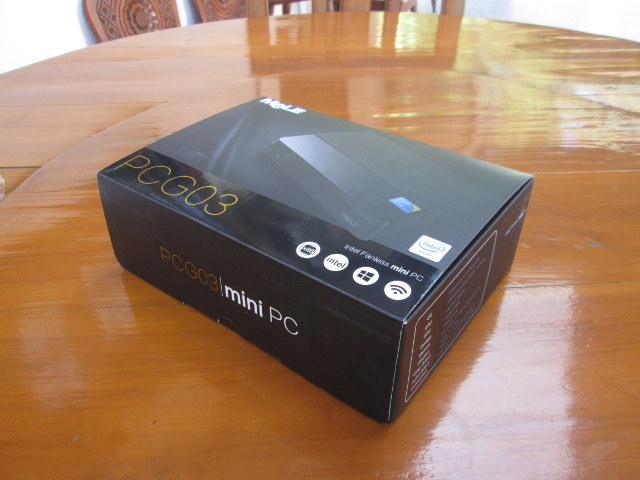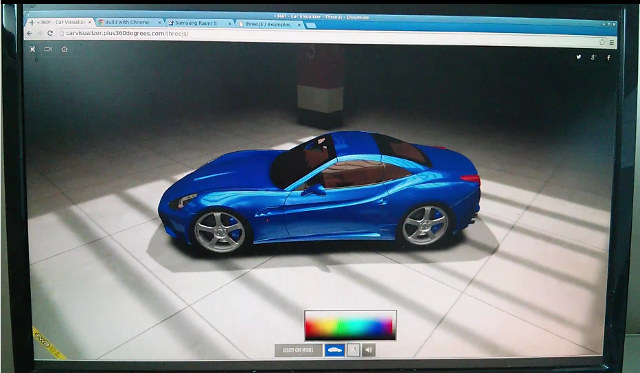Beelink has announced three new devices based on Intel Atom Z3735F processor: Pocket P1 slim PC, Pocket P2 HDMI stick, and a mini PC simply called “Mini PC” with an internal slot for 2.5″ hard drives. All three mini computers come with 2GB RAM, 16 to 32GB eMMC, and run Windows 8.1 like most other Z3735F devices, but they’re also providing dual band Wi-Fi and Bluetooth 4.0, USB 3.0 ports, and for the mini PC a Gigabit Ethernet port. Preliminary specifications for the three models: SoC – Intel Atom Z3735F “Bay Trail” quad core processor @ 1.33 GHz (Bust freq: 1.83 GHz) with Intel HD graphics Gen 7 (2W TDP) System Memory – 2 GB RAM Storage Mini PC – 16 GB eMMC + 2.5″ SATA bay (under the device) + SD card slot up P1 and P2 – 32 GB eMMC + micro SD card slot Video & Audio […]
OpenMV is an Open Source Hardware VGA Camera Controllable with Python Scripts (Crowdfunding)
Recently I’ve seen some activity about tiny cameras for makers, including Linux based SinoVoIP BPI-D1 recording up to 720p30 videos, and an upcoming mini camera for VoCore Wi-Fi module. There’s now another project called OpenMV, and open source camera for machine vision applications based on STMicro STM32, recording up to VGA resolution at 20 fps, and controlled using Micro Python scripts. OpemMV camera specifications: MCU – STM32F427, 180MHz, 225 DMIPS, 256K SRAM, 2M Flash, DMA/FPU/DSP/DCMI/SDIO/2D Acceleration Camera – 2MP OV2640 sensor with interchangeable M12 lens, 2x IR LEDS Storage – uSD interface: SDIO (4-bit mode) Expansions – 2x headers with USART, SPI, I2C, PWM, ADC/DAC, GPIOs, PWM and power signals USB – micro USB 2.0 Full Speed port Power Supply – 5V via USB; Current draw is approximately 140mA, steady state Dimensions – 4.57 x 3.56 cm The camera can be controlled using (Micro) Python scripts. with the project’s OpenMV […]
Kodi 14 Video Playback on Intel Atom Z3735F Computers Running Windows 8.1
I’ve already written a short review of Mele PCG03 mini PC powered by Intel Atom Z3735F processor, with 2GB RAM, and 32GB eMMC flash, where I found out that almost it’s not the fastest device around, it’s still usable for most tasks, albeit you can quickly run out of space with only 32GB storage, so if you really plan to use it as an actual computer using applications such as email clients, web browser and office suites, an external USB hard drive, or connection to a NAS is probably a must, or you’ll probably have to run Disk Cleaner fairly often. Mele PCG03 also have a valid Windows 8.1 license, and a VGA port, both of which are often missing on many other Bay Trail-T mini PCs. I’ve now installed Kodi 14.1 – downloaded directly from xbmc.org – on this low cost and low power computer, in order to go […]
Online Labs pBox (C1 Node) is a mini ARM Server with 4 Gigabit Ethernet Ports, mSATA and mPCIe Slots
Online Labs, a subsidiary of Iliad (free), recently launched hosting services with dedicated ARM servers based on Marvell processor with modules they call C1. The company has decided to design a baseboard (pBox) for C1 module, and, as I understand it, plans to sell it to the public. It’s an exciting development for those who are looking for affordable and tiny purpose built Linux ARM servers. Preliminary C1 Node / pBox mini server specifications (based on C1 specs and bits of information gathered online): SoC – Marvell Armada 370/XP quad core ARMv7 processor @ up to 1.2 GHz System Memory – 2GB RAM Storage – 256 MB NAND flash + mSATA slot + eSATA port + micro SD slot Connectivity – 4x Gigabit Ethernet ports USB – 1x micro USB port Expansion – mini PCie, 1x 20-pin header for expansion (no details yet) Debugging – 20-pin JTAG connector Power Supply […]
MeLE PCG03 mini PC Review and Benchmarks with Windows 8.1 with Bing
MeLE PCG03 is an Intel Atom Z3735F mini PC with 2GB RAM, and 32GB eMMC. I’ve already posted some pictures of the device and board, and since Windows 8.1 with Bing NTE (with proper license) is installed, I’ll first test the device with Microsoft OS as a reference, before trying Ubuntu or/and Android. MeLE PCG03 Setup The computer comes only with a power adapter, so you’ll need to find an HDMI or/and VGA cable for your display(s), and a USB keyboard and mouse to get started. Optionally, you’ll also want an Ethernet cable, and since storage is limited an extra storage device be it a USB hard drive, flash drive, or SD card. Once all is connected you can press the power button on the left side to boot the device. The boot normally takes about 20 seconds, but the first time, you’ll go through the usual Windows 8.1 setup […]
MeLE PCG03 Windows 8.1 Fanless mini PC Unboxing
MeLE PCG03 was announced in October 2014 with an aggressive price tag of $49 for large orders for barebone systems, and was said to support Windows 8.1 or Android 4.4. MeLE is PCG03 now is now available with 2GB RAM, and 32GB eMMC, and with a properly licensed “Windows 8.1 with Bing NTE”, but no Android for $149 on Ebay, or Aliexpress, and it should eventually show up on MeLE Amazon store. The company sent me a sample for review, so I’ll start by listing the updated specifications, and taking pictures today, before running benchmarks, trying out Kodi, and trying Ubuntu in other posts. MeLE PCG03 Specifications The look of the device and available ports have slightly changed since the first prototype was revealed last year. SoC – Intel Atom Z3735F “Bay Trail” quad core processor @ 1.33 GHz (Bust freq: 1.83 GHz) with Intel HD graphics System Memory – […]
4K Output and Video Playback Capability Tested on 6 ARM based mini PCs and Boards
Since I’ve now got a 4K TV, I’ve decided to test 4K support for six different platforms based on Rockchip, Allwinner, Amlogic, Realtek, HiSilicon, and Mstar processors. For all these platforms I’ll report HDMI 4K output options, user interface resolution, and take close up pictures of the screen while displaying a 4K 1×1 grid picture and video with the image players, and video players such as MX Player or XBMC depending which are available in the firmware. Test Setup and Procedure I’m using LG 42UB820T 42″ UltraHD television with an HDMI cable connected to HDMI 1 port of the TV. Please note that my TV only support 8-bit color depth / YCbCr 4:2:0 which may cause compatibility issues with some boxes, at least the ones based on RK3288 processor, for 2160p 50Hz or 60Hz mode. I’ll take close-up pictures of the screen with a Canon PowerShot A2300HD camera by holding […]
Linux 3D GPU Acceleration Demo on Rockchip RK3288 based Firefly Board
Several devices and development boards based on Rockchip RK3288 processor already support Linux, usually with images based on Ubuntu, including Ugoos UM3 / UT3, Open Hour Chameleon, and Firefly-RK3288 among others. What these images lack however, is support for 2D and 3D graphics acceleration with the GPU, and hardware video decoding/encoding with the VPU. But Jas-hacks has made some progress with 3D graphics support. He has managed to add GPU acceleration via EGL/OpenGL ES bringing 3D acceleration to the platform, but 2D support is not there yet, meaning X11 still heavily relies on software rendering. But the implementation is still good enough to run the usual es2gears and glmark2-es2 benchmarks. as well as some WebGL demos in Chromium. Performance is currently underwhelming, with 50 points in glmark-es2, even a bit lower than the score (54 points) I got with ODROID-X board powered by Exynos 4412 SoC with a Mali-400MP4 GPU, […]


